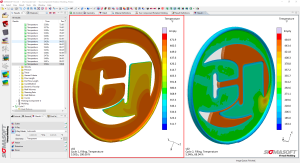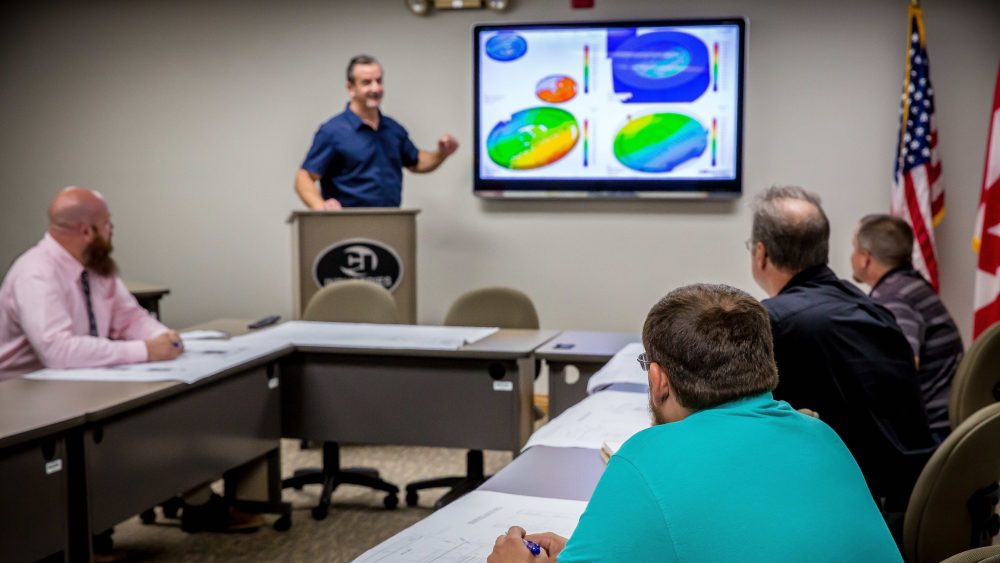A well-tuned machine relies on every one of its components to operate efficiently. In much the same way, a manufacturer relies upon its constituent departments to work in seamless unison.
With efficiency and low-friction processes serving as overarching goals, C&J Industries – a specialty assembly and injection molding firm based in Meadville, PA – has made a concerted effort to bring its myriad resources and areas of expertise into a synchronized operation. Additionally, in the wake of a recent 25,000 sq. ft. facility expansion, C&J is uniquely positioned to put its time-tested processes to use for bigger, more complex client projects.
Engineering manager Jordan Walker, who oversees the design engineering team at C&J, believes one of the company’s greatest strengths is the wealth of experience and knowledge – from tool design and implementation to quality inspection – that can be leveraged across the breadth of the company to address any challenge.
“We’ve got a very strong, cross-functional team and we’ve got experience throughout each of the phases of the process,” Walker said. “We are experts in all disciplines, but not each person is an expert at everything. Within our team here, we seem to have a very good feel for each individual area and we work as a team up here as needed. So, when we have a challenge with an inspection process, we rely on our in-house expert to help us along.”
A solution is never far away
Walker and his team pride themselves on their ability to troubleshoot any production stoppage or error that prevents a client’s project from moving forward. One tool in the arsenal that has helped to sharpen C&J’s engineering processes is the effective use of simulation. While simulation engineering is not unique to C&J, the fact that Walker and his colleagues have in-house simulation resources – as opposed to requiring an outside provider – is a clear advantage.
“When we design a tool, we actually go through a simulation process so that we’re able to predict what is going to be the output of that tool,” Walker said. “We also use it in reverse; if we have a challenge down on the floor, we can run it through simulation, verify that what we’re seeing is representative of the real tool, then we can try some modifications and re-run the simulation. It’s a tool that allows us to basically anticipate what the real-life output’s going to be, prior to completing the design.
“Having it in-house is definitely an advantage for us, as some (workshops) may need to go to a software house or simulation house that they outsource to,” he added.

For the engineers at C&J, ensuring the success of a partner’s project can start even before the simulation phase. Walker finds that a collaborative design process between his team and the client can make all the difference.
“Project-wise, we’ve been able to work with design concepts with the customer; structurally designing something, understanding what their need is,” Walker said. “A larger customer of ours – they’ve been around for 20 years plus – essentially, they were just looking for a structurally sound part. We were able to run some design iterations and figure out where they needed to be in order to meet that standard.
“One of the clean rooms we actually have in-house here was built to enable our customer to get to market quickly and that was managed through one of our project engineers working in turn with our (design engineering) team to make sure we were able to coordinate all the efforts to come together at the right time,” Walker added. “We were building a piece of semi-automation equipment, we were installing a room and doing a room layout, and making sure we had it all together at the same time so that we could help them get to market.”
Proven processes that deliver on time
Heading into the new year, Walker hopes that the various departments that comprise C&J will continue to fine-tune their processes and get the overall organization thinking about how to apply simulation engineering and other cutting-edge resources to their projects.
“We’re continuing to evaluate our processes and look for efficiencies and making sure that communication is there,” Walker said. “We’ve used simulation in this building for 15 years, but I’m not sure it’s getting the visibility that it can within our company. So, that’s one of the focus areas; get the visibility, get the awareness and see it utilized better across the company so that it can be implemented and leveraged more.”
Walker also plans to put an even greater spotlight on the quality and variety of engineering skills his department can bring to bear – a strength he thinks will continue to serve C&J well in the new year.
“One thing we pride ourselves on is that, historically, we’ve been heavy on the engineering side across the company. That is one of the focuses I think we’ve had over the years: the engineering support you can get at C&J. The system base that we have here has been very effective over the years. Obviously, there have been improvements over time, but we have a process that steps through each phase to make sure that we’re successful at the end of that process and that we’re able to launch production reliably.”
If you want more information or would like to explore opportunities to boost your project engineering, please contact us.


